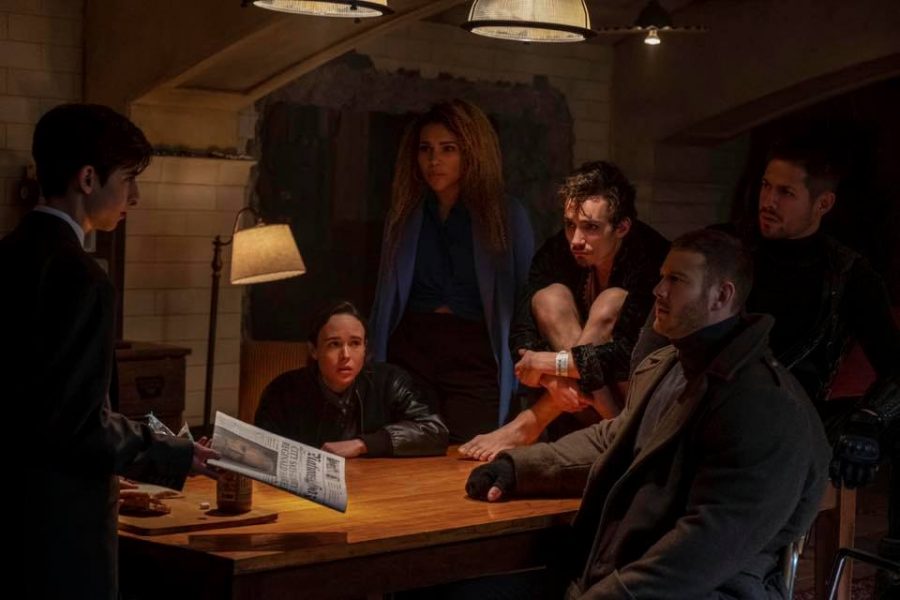At a funeral eight days before the impending apocalypse, screenwriter Jeremy Slater introduces us to “The Umbrella Academy,” a gaggle of superheroes who have the chance to save the world before it’s too late. The series, a blend of Tim Burton-esque quirks and David Fincher-style color schemes, is based on the Eisner Award-winning comic book of the same name by Gerard Way — frontman of the band My Chemical Romance — and artist Gabriel Bá.
Thirty years before the story begins, 43 infants were born at the same time to 43 mothers around the world who, minutes before going into labor, showed no signs of pregnancy. Seven of these children are acquired by the eccentric and reclusive billionaire, Sir Reginald Hargreaves. He doesn’t assign them real names, leaving that to their robot mom instead, and trains the children — Nos. 1 through 6 — to control their distinct, innate abilities. Giftless No. 7 (Ellen Page), or Vanya, is the outlier. Her only specialty is being a decent violinist.
The series veers sharply away from past comic book adaptations come episode two, in which the two eerily childlike antagonists (Mary J. Blige and Cameron Britton) are first shown wearing inflatable animal masks. (They are shooting up a blue-lit department store in pursuit of No. 5 (Aidan Gallagher), a time-traveling, now 55-year-old man stuck in his teenage body who is trying to save his one true love, store mannequin Dolores, while still in hiding. All thw while, Queen’s “Don’t Stop Me Now” plays in the background.) If that seems like a lot, it is — but that’s one of the show’s strengths. For a ten-episode series, “The Umbrella Academy” explores an impossible amount of plotlines and elements; there’s a donut shop romance, a man living on the moon for four years and time-traveling, animal-mask-wearing super assassins. The multitude of moving elements can feel overwhelming, but the show never loses the viewer’s interest.
This does, however, highlight the show’s biggest defect — its fear of being bold. While the source material was unmistakably different, the series leans too much on conventions. The writing is filled with expository cliches and a reluctance to make any revelatory statements. This results in every mystery being dragged out to almost unwatchable lengths. On top of this, the series feels tonally lost: violence and torture scenes feel almost misplaced amidst the comical absurdity that is the rest of the story. Though this worked in the comics, it doesn’t translate well to the screen, partly because the series does not fully embrace the story’s innate weirdness.
These misses are especially frustrating because the story features interesting characters that are worth getting to know better. “The Umbrella Academy” is filled with weird, angst-driven, post-idealized, emo heroes that are portrayed gorgeously by actors not afraid to lean into the absurdity of the source material. The strongest part of the show does not just lie in the ridiculousness of the story but in the fullness of the characters’ humanity. At the center, it’s a story about a dysfunctional family that, after losing its main parental figure, is forced to remember, forget and forgive. The characters did not quite grow up to be the saviors of the broken, beaten and damned that their father trained them to be. But as they dance to Tiffany’s classic 1987 remake of “I Think We’re Alone Now,” “The Umbrella Academy” shows us that even with the apocalypse a week away, they will find a way to carry on.
Email Yaroslava Bondar at [email protected].
























































































































































